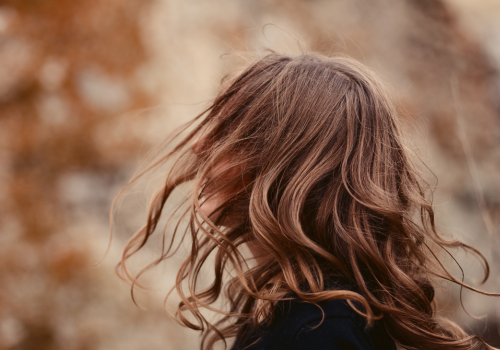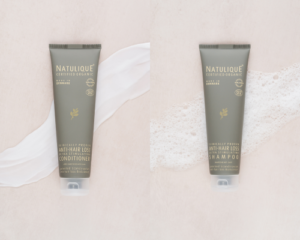Introduction to hair coloring
Importance of hair color
Influence of hair color on overall appearance
Hair color plays a crucial role in a person's overall appearance. It can enhance facial features, accentuate eye color and even give the impression of a brighter complexion. Opting for the right shade can transform a dull appearance into a striking, vibrant look.
How to improve skin tone with hair color
Improving your complexion with hair color is a trick used by many beauty experts. Specific shades can illuminate the complexion, conceal imperfections and give a youthful appearance. For example, golden tones can add warmth to the face, while cooler colors like platinum can create an elegant contrast for a more dramatic effect.
Factors to consider when coloring hair
Hair texture
Hair texture is a determining factor in color choice. Fine hair may require different techniques to avoid damaging the hair fiber, while thick hair may require a specific color formulation to ensure even coverage. A well-chosen color must adapt to the texture to deliver a harmonious result.
Natural hair color
Natural hair tone is a key foundation for successful coloring. Understanding your hair's natural undertone allows you to choose a color that blends seamlessly and naturally. To achieve this, it may be necessary to use a hair diagnosis to determine the base shade and complementary shades that will enhance your complexion, without forgetting to respect the integrity of the hair to avoid problems of texture or shine.

Choosing the right hair color for your complexion
The role of skin tone in choosing hair color
Determine your colorimetry
Determining your personal colorimetry is the first step in choosing a hair color that will enhance your complexion. Personal colorimetry is based on notions of skin undertones: cool, warm or neutral. Skin undertones directly influence the shades that will best enhance your appearance. A simple test like looking at the veins on your wrist can help identify these undertones. Blue or purple veins indicate a cool undertone, while green veins signal warm undertones. If you can't clearly distinguish one from the other, your undertone is probably neutral.
Matching skin tone to hair color
Once you've determined your undertone, it's essential to choose hair colors that harmonize with it. For complexions with cool undertones, shades such as platinum blonde, ash brown or bluish black are ideal, as they respect the skin's natural radiance. Conversely, warm-toned skin tones work well with rich colors like golden honey, caramel or golden chestnut, which accentuate the skin's warmth. Neutral skin tones are lucky enough to be able to experiment with a wide range of colors, from cool shades to warm tones, without any of them clashing with the natural complexion.
Examples of successful matches between skin tone and hair color
Fair complexion and appropriate hair color
Fair-skinned people often have pink or peach undertones, making them perfectly suited to soft colors that don't overpower them. Blonde shades such as chantilly, champagne or strawberry blonds are particularly flattering. These colors add softness and complement without excessive contrast. For those who prefer darker shades, a light chestnut or mahogany red can add an elegant dimension without weighing down the overall appearance.
Dark complexion and appropriate hair color
For those with dark complexions, it's essential to work with the depth and richness of the skin. Hair colors that add dimension are often the most flattering. Think deep browns, intense blacks with bluish or red highlights, or bright colors like burgundy or eggplant. These shades not only compliment a dark complexion, they enrich the overall look by accentuating the natural, melodious elements of your appearance. Gold or copper highlights can also be blended to add warmth and luminosity to the face.
See also: What's the alternative to wax for a light fix?
Colouring techniques to enhance the complexion
Overall coloring
Description and benefits of global coloring
Visit overall color consists of applying a single, uniform color to the entire head of hair. It's ideal for those looking for a radical change or simply want to cover gray hair evenly. The main advantage of all-over coloring is its ability to completely transform the look in a short space of time, creating a fresh, evenly toned appearance. In terms of maintenance, it generally requires regular touch-ups to avoid the appearance of roots, but in return offers stunning results and an ideal base for future transformations. To maximize the effect, choosing a color that harmonizes well with the complexion can enhance the overall radiance and evenness of the face.
Ideal overall color
All-over coloring is often recommended for those who prefer a pure hair color, free of various shades. It's ideal for hair that hasn't been overly chemically treated, as it allows the color to adhere well and last longer. It's also an excellent option for completely masking gray hair, for a more youthful, consistent look. What's more, for those looking to enter the vibrant world of hair coloring, the all-over technique lets you start with a solid shade that can be adjusted or accented with highlights in the future.
Highlights and highlights
Creating depth and dimension
Highlighting and highlighting are colouring techniques that can be used to add dimension to the hair. Unlike overall coloring, they bring subtle variety to hair by introducing multiple tones. Highlights can be lighter or darker than the base color, creating an illusion of depth and movement. This technique is perfect for those who want to add texture and shine without committing to a radical color change. It's perfect for complexions that benefit from a little warmth or freshness, as it lets you experiment with bolder shades without sacrificing natural appearance.
Integration of reflections in natural color
Reflections can be strategically placed to improve certain facial features or illuminate the complexion. For example, lighter highlights around the face can soften features and give a sun-kissed appearance, while darker highlights lend a sophisticated, sexy look. Incorporating these highlights into natural hair color is a great way to accentuate natural shine and play with light, while tailoring the style to your unique skin tone. Professionals often recommend starting with highlights closer to your natural color for a subtle look, and gradually intensifying them for a stronger impact.
Scanning and shading
Differences between scanning and shading
Visit scan and the’shaded are two popular techniques that add a dramatic dimension to hair while enhancing the complexion. Balayage is a freehand coloring technique that creates a natural, sun-kissed, gradual effect without sharp demarcation. It's perfect for those seeking a discreet, summery look. Ombré, on the other hand, involves a gradient effect that starts darker at the roots and goes lighter at the tips. This style is ideal for those who want a stronger, bolder contrast while benefiting from easy maintenance at the roots.
Adaptation to different hair types and complexions
These techniques are admirably suited to all hair types and various shades. Balayage is particularly well-suited to long hair, offering a harmonious continuity that naturally accentuates length. It also works well with light complexions, which benefit from a subtle shine. Ombré is a fantastic option for those who want a more dramatic look without impacting the natural root, perfect for darker complexions.
Care tips to prolong color
Preparing hair for coloring
Importance of preparation
Well-prepared hair is crucial for successful, long-lasting coloring. Before getting started, it's advisable not to wash your hair for at least 24 hours before coloring, as the scalp's natural oils protect against irritation. In addition, we recommend moisturizing and nourishing your hair a few days before coloring to ensure that it is healthy and absorbs pigments better.
Recommended products for preparing hair
Using a clarifying shampoo before coloring can help remove hair product residues and mineral build-up, allowing the color to adhere better. Hair masks or keratin-based treatments are also beneficial for strengthening the hair fiber, making it more resistant to the aggressions of the coloring process.
Maintaining color after coloring
Washing techniques to preserve color
To preserve color longer, avoid washing your hair too often. It's best to space out shampoos to two or three times a week, and use lukewarm or even cold water for rinsing. Shampoos and conditioners specifically formulated for color-treated hair will help maintain shine and protect pigments.
Use of specific post-coloration care products
Care products containing UV protectants and antioxidants are essential for prolonging color life. Incorporate color masks with reviving pigments once a week to intensify color, and add serums or protective oils to your hair routine to nourish and protect hair.
Hair color and complexion FAQs
How often should I refresh my color?
In general, touch-ups every 4 to 6 weeks are recommended to maintain fresh, even color.
Are there colors to avoid depending on your skin tone?
Yes, some skin tones don't work well with colors that contrast sharply with their natural undertones. It's important to know your colorimetry before choosing a color.
Is it safe to color my hair at home?
This can be done with quality products and by following the instructions correctly. However, a professional can offer a personalized diagnosis to avoid mistakes.
How do I know whether to opt for temporary or permanent hair color?
For a first try or a subtle change, temporary coloring may be ideal. For a lasting change and complete coverage of gray hair, a perm is preferable.
Do heated styling tools affect my color?
Yes, excessive heat can dull color. Always use a heat protector and avoid excessively high temperatures to preserve shine.




